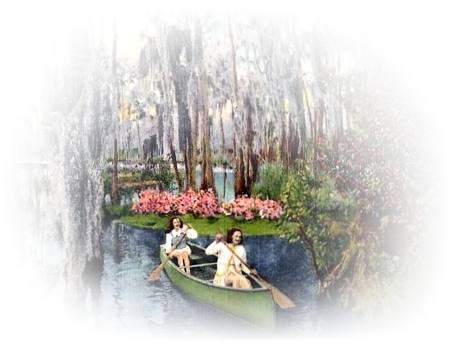 | ||||

Historic Dupree Gardens - Published Articles
Website provided by The Dupree Gardens Historical Society.
________________________________________________________________________________________________________
________________________________________________________________________________________________________
The blossoms made headlines when airline president Ted Baker won the bid with a pledge of $250,000 in war bonds.
The blossoms, displayed on black velvet backgrounds, were said to have amazed florists on Park, Madison and Fifth avenues who found it “inconceivable that Florida could offer fully matured camellias in this season.”
Dupree Gardens was reopened for a brief time in 1946, mostly for civic events and private family gatherings.
Dupree sold the property in the early 1950s, with some of it developed as home sites and a parcel that included Dupree Lake opened as a nudist camp. Some 400 acres were citrus groves.
The lodge was converted into a private residence. The tearoom burned in 1995.
And the native lime rock ticket booth stood for years as the only reminder of the once-popular attraction.
Although the site was listed in the 1992 edition of Historic Places of Pasco County, compiled by members of the Pasco County Historical Preservation Committee, a marker designating the location wasn't erected until earlier this year.
In August, a developer announced plans to build about 1,100 homes, plus some commercial space, on 471 acres that includes the Dupree Gardens site.
Beazer Homes plans to save the ticket booth as part of a nature preserve. Some of the original flora still grows on the property, and plans are to use the name and history of Dupree Gardens in marketing.
________________________________________________________________________________________________________
________________________________________________________________________________________________________
________________________________________________________________________________________________________
________________________________________________________________________________________________________

